|
|
|
The Birds of British Somaliland and the Gulf of AdenTheir Life Histories, Breeding Habits and EggsVolumes III and IV
Sir Geoffrey Archer and Eva M. Godman
Colour plates: Archibald Thorburn, Henrik Gronvold
Oliver & Boyd
1961
Published in four volumes. Volumes I and II in 1937 and volumes III and IV in 1961.
"These volumes complete the series of which the first two volumes appeared in 1937, The aim of the work is to give details of the life histories, breeding habits and eggs of the birds of the whole of the Red Sea area and the Horn of Africa - an area of great ornithological interest because of its situation at the crossroads of north-south and east-west migration routes. The coasts of the Red Sea are followed by many hundreds of thousands of Palaearctic birds ranging in size from tiny warblers to great Steppe-Eagles in their migration from Eastern Europe and Western Asia. The east-west route across the area is followed by migratory birds from Southern Asia to Northern Somaliland."
|
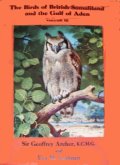
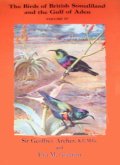
|
|
Popular Handbook Of Indian BirdsHugh Whistler
Illustrations: H. Gronvold
Gurney and Jackson
3rd revised and enlarged edition
1941
From the preface: In the second edition the number of species described at length was increased to 275, and that number has now again been increased to 300. In the second edition, as a new feature, some 430 other species were mentioned in short paragraphs, so that in all over 500 species were brought to the notice of the observer. More of these short paragraphs have been added in this new edition, and in consequence the reader will now find his attention drawn to some 550 Indian birds. It is hoped, therefore, that no really common or striking bird in any part of India, other than those of very local distribution, has failed to find a place in the book. An appropriate number of new illustrations have also been added, and I hold myself fortunate that these were completed just before the lamented death of Mr H. Gronvold, as his plates and figures contributed so materially to the success of the first two editions.
|
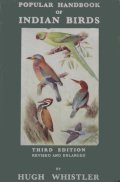 |
|
The Birds of the Malay Peninsula. Vol.IV: The Birds of the Low-Country Jungle and ScrubA General Account Of The Birds Inhabiting The Region From The Isthmus Of Kra To Singapore With The Adjacent IslandsFrederick N. Chasen
25 colour plates: Henrik Grönvold
Issued by Authority of the Federated Malay States Government
H.F. & G. Witherby
1939
From the preface: "Certain ornithologists in Europe have complained to me that the peculiar arrangement of this work, in which the Malayan avifauna is artificially divided, makes reference difficult. I freely admit the weakness in the plan. At first I also disliked the novel idea of dividing the species into 'common birds,' 'birds of the hill stations,' etc., but I am now convinced that the original choice, for which I was not responsible, was a wise one. These books are meant rather more for the use of residents in Malaya than for my fellow-professionals in museums abroad. Any attempt to condense this first detailed account of Malayan birds into one volume would be futile, and a series of volumes dealing with the birds in a natural sequence would remove the work, on grounds of expense alone, from the reach of most amateur naturalists in the country. As it is, there is one volume available at a reasonable price for the sportsman, and one of the others for the resident wherever he lives. The first volume is for use in the towns and city gardens, for the 'verandah birdwatcher' in fact. The next and final volume will, I hope, satisfy the serious ornithologist, for it will contain, in addition to other features, a summary of Malayan birds in a systematic arrangement. Furthermore, I hope that in the not too distant future it will be possible to produce a work on Malayan birds planned on the lines of The Fauna of British India. The manuscript of this is in an advanced state."
|

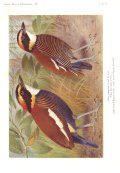
 |
|
The Handbook Of British BirdsH.F. Witherby, Rev. F.C.R. Jourdain, Norman F. Ticehurst, and Bernard W. Tucker
Illustrations: M.A.Koekkock, R. Green, H. Grönvold, G.E. Lodge, P. Rickman, P. Scott
H.F. & G. Witherby Ltd
1938-1941
Published in 5 volumes:
- Volume One: Crows to Flycatchers
- Volume Two: Warblers to Owls
- Volume Three: Hawks to Ducks
- Volume Four: Cormorants to Cranes
- Volume Five: Terns to Game-Birds
"The Handbook" is a much expanded and revised version of the Practical Handbook Of British Birds which was published between 1919 and 1924.
A number of editions of this five volume set were subsequently published. A concise edition The Popular Handbook Of British Birds was first published in 1952.
|
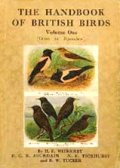 |
|
The Birds of Kenya Colony and the Uganda Protectorate
Sir Frederick Jackson
Editor: W.L. Sclater
Illustrations: G. E. Lodge, H. Grönvold
Gurney & Jackson
1938
A three volume work based on notes and specimens put together by Jackson during 30 years in Eastern Africa. The notes were edited by W.L. Sclater.
|
Buy from amazon.co.uk 
|
|
The Birds of British Somaliland and the Gulf of AdenTheir Life Histories, Breeding Habits and EggsVolumes I and II
Sir Geoffrey Archer and Eva M. Godman
Colour plates: Archibald Thorburn, Henrik Gronvold
Gurney & Jackson
1937
Published in four volumes. Volumes I and II in 1937 and volumes III and IV in 1961.
|
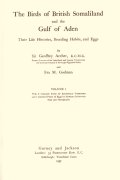
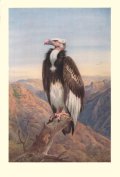
|
|
The Birds of the Malay Peninsula. Vol.III: Sporting Birds: Birds of the Shore and EstuariesA General Account Of The Birds Inhabiting The Region From The Isthmus Of Kra To Singapore With The Adjacent IslandsThe Late Herbert C. Robinson and Frederick N. Chasen
25 colour plates: Henrik Grönvold
Issued by Authority of the Federated Malay States Government
H.F. & G. Witherby
1936
From the preface: "After Mr H. C. Robinson's death in 1929 no material actually intended for the present volume could, contrary to expectation, be found, but there have passed to me, among other papers by him, carefully prepared manuscripts dealing with some of the relevant groups of birds, but obviously intended for a more systematic and exhaustive work on the avifauna of the Malay Peninsula than the present series of volumes. The fullest use has been made of these manuscripts in this volume, in which I have made every effort to maintain the plan of the two already published, even to the extent of retaining certain items of classification and nomenclature against my personal inclination, for I have considered it unwise to make changes half-way through the work. I am conscious that this fasciculus and the two as yet unpublished volumes, for which I shall be responsible, rnay not attain to the high standard of those produced by H. C. Robinson, for as one who is perhaps in a better position to judge than many, I have always considered my predecessor's two volumes as reaching a standard of accuracy and originality rare in modern ornithological publications."
|
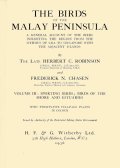
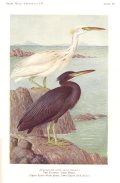
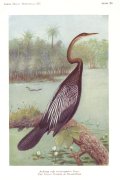 |
|
Popular Handbook Of Indian BirdsHugh Whistler
Illustrations: H. Gronvold
Gurney and Jackson
2nd edition
1935
Covers 275 species.
|
 |
|
The Trail That is Always NewWilloughby P. Lowe
Illustrations: H. Gronvold, J.P.W. Lowe
Gurney and Jackson
1932
This book, based on diaries, relates Lowe's travels collecting birds for the British Museum.
|
 |
|
The Birds Of Tropical West Africa
With Special Reference to Those of the Gambia, Sierra Leone, the Gold Coast and Nigeria
David A.Bannerman
Colour plates: G.E. Lodge, H. Gronvold, Henry Jones, Roland Green, P. Rickman, and others
Crown Agents For The Colonies
1931-1951
Published in 8 volumes with over 3,500 pages in total and 85 coloured plates.
|
Volume one cover
 |
|
Birds of the Philippine IslandsWith Notes On The Mammal FaunaThe Hon. Masauji Hachisuka
Illustrations: H. Grönvold, W.F. Frohawk, and others
H.F. & G. Witherby
1931-1935
Originally published in four parts in 1931, 1932, 1934 and 1935. These parts were bound in paper covers and many copies have subsequently been rebound, sometimes in two volumes. The four parts combined are approximately 900 pages with 101 plates of which 61 are colour. Also includes 2 fold-out maps in part one and many line drawings throughout.
Parts I & II: Galliformes to Pelecaniformes
Parts III & IV: Accipitriformes to Passeriformes
|
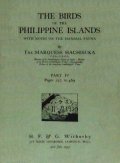

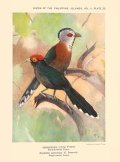
|
|
A Monograph Of The Birds Of Prey (Order Accipitres)H. Kirke Swann
Editor: Alexander Wetmore
Colour plates: H. Grönvold others
Wheldon & Wesley
1930-1945
Originally published in 12 (?) parts. Subsequently collected in two volumes. In total comprises 1024 pages with 40 colour plates and 16 photogravure plates.
|
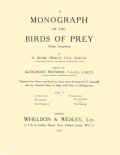

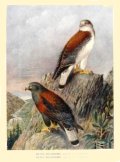 |
|
Nicoll's Birds of Egypt
Colonel R. Meinertzhagen
Illustrations: G. E. Lodge, Roland Green and H. Grönvold
Hugh Rees Ltd
1930
Two volume (700 pages) work with 31 colour plates, a colour frontispiece and a number of black and white photogravure plates and illustrations. This work was started by Michael J. Nicoll, the Assistant Director of the Zoological Gardens of Giza, who died before he could complete the task. It was completed by Colonel Richard Meinertzhagen.
|
Buy from amazon.co.uk 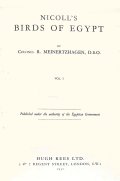
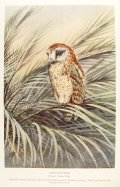
|
|
Handbook Of The Birds Of West Africa
George Latimer Bates
Illustrations: Henrik Grönvold
J. Bale & Sons & Danielsson Ltd
1930
570 pages with black and white illustrations and two maps.
|
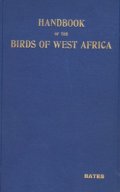 |
|
Shanghai Birds: A Study Of Bird Life In Shanghai And The Surrounding DistrictsE.S. Wilkinson
22 colour plates: Henrik Grönvold
North China Daily News & Herald Limited
1929
240 pages with introductory chapters followed by species descriptions that include identification, behaviour and nesting information.
|
Buy from amazon.co.uk 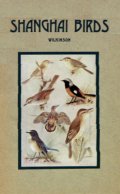
|
|
The Birds of the Malay Peninsula. Vol. II: The Birds of the Hill StationsA General Account Of The Birds Inhabiting The Region From The Isthmus Of Kra To Singapore With The Adjacent IslandsHerbert C. Robinson
25 colour plates: Henrik Grönvold
Issued by Authority of the Federated Malay States Government
H.F. & G. Witherby
1928
From the preface: "The present volume contains an account of all the species of birds that are with certainty known to inhabit or visit the mountains and the neighbourhood of the various hill stations in the Malay Peninsula. For this purpose it has been necessary to fix a definite altitudinal limit, which has been taken at 2500 ft. above sea-level. This limit is necessarily somewhat arbitrary, but it will, I think, be found that few species that can be called strictly montane descend below this datum line, which also excludes, from elevations above it, very many forms that are typical lowland birds. The range of country dealt with in this volume is the almost exclusive habitat of nearly all the races of birds that are peculiar to the Malay Peninsula ; these are, as has been explained in the section on Zoogeography in Volume I., closely allied to birds inhabiting similar altitudes in Borneo, Sumatra and Tenasserim, while there is, in addition, a small but characteristic group, whose range extends to the Himalayas on one side and, in one or two cases, to the Philippines on the other."
|
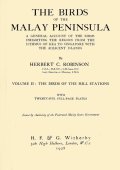
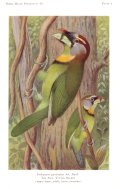
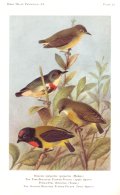 |
|
Popular Handbook Of Indian BirdsHugh Whistler
Illustrations: H. Gronvold
Gurney and Jackson
1st edition
1928
Covers 250 species.
|
 |
|
The Birds of the Malay Peninsula. Vol. I: The Commoner BirdsA General Account Of The Birds Inhabiting The Region From The Isthmus Of Kra To Singapore With The Adjacent IslandsHerbert C. Robinson
25 colour plates: Henrik Grönvold
Issued by Authority of the Federated Malay States Government
H.F. & G. Witherby
1927
From the preface: "Some explanation of the plan of this work is perhaps necessary. The total number of species or subspecies known to occur within the limits of the Malay Peninsula, as here defined, is somewhat over seven hundred, and without very severe compression it would be impossible to give an account of all within the limits of one, or even two volumes, and at the same time to supply a certain number of coloured plates. I have, therefore, attempted to deal with the subject by dividing the hork into five volumes, which will be as follows: I. The Commoner Birds.
II. The Birds of the Hill Stations.
III. Sporting Birds ; Birds of the Shore and Estuaries.
IV. The Birds of the Low-Country Jungle and Scrub.
V. Open-Country and Ricefield Birds, Migratory Birds and Species not included in the above volumes. Keys to all the Forms from the Peninsula, and a General Index to all the volumes. The divisions are necessarily somewhat artificial, and many species will, of course, be found in one or more areas, while as regards the first volume the term 'Commoner' may perhaps be open to criticism in certain cases. I have, however, endeavoured to include in the present section as many as possible of the species that are likely to be met with by the ordinary visitor to, or resident in, the Malay Peninsula, whose work or interests keep him to the towns and villages, large and small, and who does not visit the denser jungle or the higher hills. Where a family or group does not possess a member that falls within this definition, I have given some brief general descriptions, for instance, in the case of the honey guide (p. 149), which cannot be said to be a common bird."
|
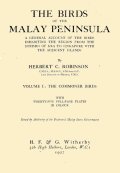
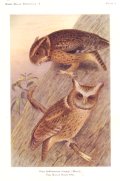
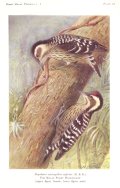 |
|
Notes on the Game Birds of Kenya and Uganda(Including the Sand-Grouse, Pigeons, Snipe, Bustards, Geese, and Ducks)
Sir Frederick J. Jackson
Colour plates: J.G. Keulemans, H. Gronvold, J. Smit
Williams & Norgate
1923
|
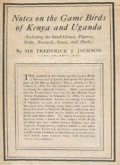
|
|
A Natural History Of The Ducks
Volume II: The Genus Anas
John C. Philips
With plates in color and black and white from drawings by Frank W. Benson, Allan Brooks, Louis Agassiz Fuertes and Henrik Grönvold
Houghton Mifflin
1923
|
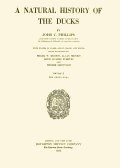
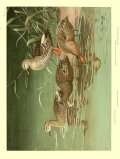 |
|
Rare Vanishing & Lost British BirdsW. H. Hudson
25 colour plates: H. Gronvold
Editor: Linda Gardiner
J. M. Dent & Sons
1923
Compiled from notes by W.H.Hudson and published a year after his death.
|

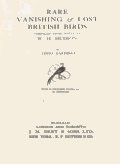 |
|
The Canary Islands: Their History, Natural History And SceneryAn Account Of An Ornithologist's Camping Trips In The Archipelago
David A. Bannerman
3 colour plates: Roland Green (1), Henrik Gronvold (2)
Many black and white photographs
Gurney & Jackson
1922
From the foreword: "This book does not profess to be a complete Natural History of the Canary Islands. It deals principally with their Ornithology, and Parts II. and III. contain accounts of various expeditions made by the author during a more or less thorough exploration of the group on behalf of the Bird Department of the. British Museum of Natural History. When in pursuit of birds in the various islands, it naturally followed that other subjects besides ornithology had, in the course of investigations, to be studied. The geological formation of the Islands had to be examined in relation to the fauna and flora ; the Zones of Vegetation for their bearing on the distribution of bird-life, and so it came about that the material for Chapters II. to VI. was accumulated. The ornitho- logical results have already been published in the pages of the Ibis — the Journal of the British Ornithologists' Union. The lack of any really brief account of the discovery and conquest of the Islands prompted me to include Chapter I., although it is somewhat outside the scope of this book. So attractive is the early history of the Archipelago, that any traveller sufficiently interested in the Natural History of the Islands to read these pages, will almost certainly want to know something of their early inhabitants and conquerors."
|
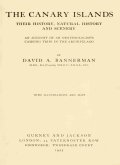
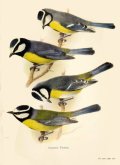
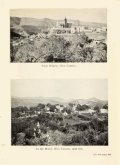 |
|
A Monograph Of The PheasantsVolume IVWilliam Beebe
Colour plates: G.E. Lodge, L.A. Fuertes, A. Thorburn, H. Grönvold, C. R. Knight
Photographs: William Beebe, D. Seth Smith
Published under the auspices of the New York Zoological Society by Witherby and Co
1922
Published in four volumes.
Opening lines: "GOLDEN PHEASANTS. The Golden and the Amherst Pheasants form a very natural genus, well isolated and demarcated from the others of this family. Linnaeus placed the species, with which he was acquainted, in the all-inclusive genus Phasianus, and although they have since rightly been separated, yet it is probable that in any linear classification, unnatural though it be, the two groups would come rather near together. These pheasants are small in comparison with the general run of their allies, and the sexes are very unlike in appearance. The two known species are closely related, and offer an excellent illustration of differentiation of pattern and colour, while structurally they are almost identical. This is not by any means invariably the case with other birds, and in many instances the apparently evanescent phenomenon of pigmentation outlasts and outvalues changes in actual structure and dimensions of feathers and other tissues. The presence or absence of feathering on the face is almost the only structural difference between these species. The males have elongated stiffened crests, and a very remarkable cape, specialized both as to musculature, structure and pigment. The tail-feathers are long and slightly arched, and the entire plumage shows a very high degree of specialization of colour. As is so often true, it is impossible to indicate which is the more ancestral type. That vanished form probably lay midway, the two descendants each developing specialization in different parts of the plumage. For instance, while the pure white of the Amherst's cape is far more of an extreme specialization than the orange of the Golden, yet the barbless extremities of the feathers of the latter are specializations of an extremely high order."
|
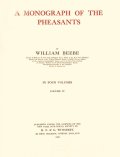
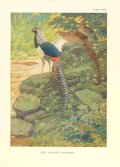
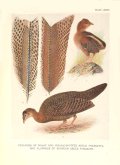
|
|
A Monograph Of The PheasantsVolume IIIWilliam Beebe
Colour plates: G.E. Lodge, L.A. Fuertes, H. Jones, H. Grönvold, C. R. Knight, E. Megargee
Photographs: William Beebe, General A.C. Bailward, Dwight Huntington, Douglas Carruthers, Roy C. Andrews, W.R. Price
Published under the auspices of the New York Zoological Society by Witherby and Co
1922
Published in four volumes.
Opening lines: "KOKLASS PHEASANTS. The Koklass Pheasants are birds of medium size, and impossible to place with any certainty in a linear scheme of classification. They show traces of resemblance to several groups, and in spite of the moderate length of tail of the cocks, perhaps come as close to the genus Syrmaticus as I have defined it, as to any other. The syrinx is extremely close to that of Phasianus. The head in both sexes is entirely feathered. The male has an elongated crest, and, owing to the posterior portion being of a different colour and sprouting rather densely behind the ear-coverts, this portion has been considered to be more of the nature of ear-tufts than a crest. This posterior crest, however, on examination is seen to extend clear across the occiput. The crest in the female is shorter. Most of the body feathers are lanceolate. The tail consists of sixteen feathers, and is extremely graduated and wedge-shaped ; the middle pair are slightly the longest, and about twice as long as the outer pair. The tail-coverts simulate the tail itself in their colour, great length and gradation. The wings appear exceedingly long and pointed for a pheasant, owing to the fact that the primaries extend well beyond the secondaries when the wing is closed. The I St primary is considerably longer than the 2nd, which is about equal to the 8th ; the 4th is slightly the longest of the series. The tarsus is slightly longer than the middle toe and claw."
|

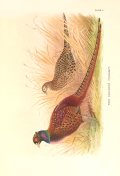
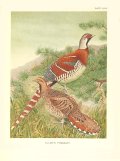
|
|
A Monograph Of The PheasantsVolume IIWilliam Beebe
Colour plates: G.E. Lodge, H. Grönvold, C. R. Knight
Photographs: William Beebe
Published under the auspices of the New York Zoological Society by Witherby and Co
1921
Published in four volumes.
Opening lines: "KALEEGE PHEASANTS. This group is the largest component of the old genus Euplocamus, which formerly included Diardigallus, Lophura and Acomus. It seems to me to consist of two well-marked subgenera, Gennaeus and Hierophasis, the former with seven species, the latter with two. The species most familiar to those who keep pheasants or have opportunity of visiting collections is doubtless the Silver Pheasant, or Kaleege. One of the native names throughout the East is Kaleege or Kalij, and I have chosen to use this to characterize the pheasants of this genus. The least specialized type of Kaleege Pheasant is quite fowl-like, especially as to shape of body and carriage of the tail, the latter consisting of sixteen feathers, laterally compressed. These are strongly graduated in order from without inward, the central pair being the longest, and at least three times the length of the outer- most. There is great variation in the actual and relative length of the tail as a whole."
|
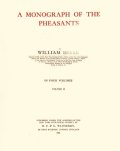


|
|
The Game-Birds Of India, Burma And CeylonE.C. Stuart Baker
Volume 1 illustrations: H. Grönvold, G. E. Lodge, and J. G. Keulemans
Volume 2 illustrations: H. Grönvold
Bombay Natural History Society
1921
Volume 1: Ducks and their allies
Volume 2: Snipe, Bustards, Sand-grouse
Volume 3: Pheasants and bustard-quail
From the introduction: "In 1896 and the following years I wrote a series of articles on " Indian Ducks and their Allies " in the Journal of the Bombay Natural History Society. In 1908 these articles were brought up to date, corrected and added to and appeared in book form, and so well was this volume received by the public, especially by sportsmen in India, that the edition was soon exhausted. The first edition appeared principally to meet a want which had long been felt by Small-Game shooters in India. that is to say a volume, reference to which would not only show how each duck could be identified, but would also give some idea of its habits and its scarcity or the reverse. Hume and Marshall's " Game Birds of India," which was published in 1879-80, grand book as it was and is, was felt to be behind the times, and much had since been recorded in various magazines and journals. But these records were scattered here, there and everywhere, and could not be consulted without the greatest difficulty, and it was, indeed, quite impossible for anyone who had not access to a very complete library to say what had, and what had not, been recorded. The first edition may be said not only to have served its purpose for the time being, but it served yet another and perhaps even more important one, for since its appearance a very large amount of information has been published to add to and correct its contents. This second edition incorporates these additions and corrections, and adds a considerable amount of matter not obtainable by me when writing in India. Several species have been added to the Indian list, and the geographical distribution of certain others has been more correctly given."
|
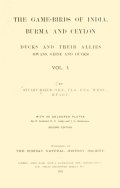
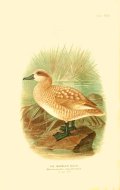
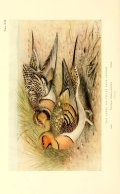 |
|
The Birds Of British Guiana: Based On The Collection Of Frederick Vavasour McconnellVolume IICharles Chubb
10 colour plates (H. Grönvold) and numerous black and white illustrations
Bernard Quaritch
1921
From the introduction: "The Itinerary of the Expedition to Mount, Rorainia in 1898, in the present volume, has been written by Mr. J. J. Quelch, who accompanied the late Mr. F. V. McCoonell on that occasion.
.....
Mr. H. Grönvold has, as in the previous volume, prepared the original drawing of each of the coloured plates and of the text figures which have, in the present volume been reproduced by the Sun Engraving Company. It is much to be regretted that, owing to the War and its after effects, the publication of the present volume has been so long delayed. I have pleasure in expressing my best thanks to the following gentlemen for their assistance during the preparation of this volume: - Lord Rothschild, Mr. Percy R. Lowe of the British Museum (Natural History), and Mr. Tom Iredale."
|
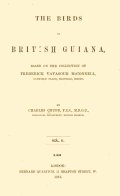
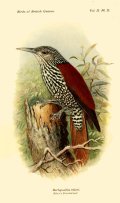
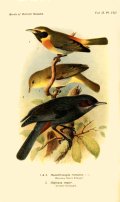 |
|
Birds of La PlataVolume OneW. H. Hudson
Illustrations: Henrik Gronvold
J.M. Dent & Sons
1920
Originally published in two volumes. From the introduction: "The matter contained in this work is taken from the two volumes of the Argentine Ornithology published in 1888-9, and was my first book on the subject of bird life. The late Philip Lutley Sclater, who wasat that time the chief authority in this country on South American Ornithology, collaborated with me in the work to the extent of arranging the material in accordance with the most popular system of classification, and also adding descriptions, synonymy, etc., of the species unknown to me. All this matter which he contributed in order to make the work a complete list, I have thrown out, along with the synonymy of the species described by me. And there was good reason for this simplification, seeing that we cannot have a complete list owing to the fact that fresh species are continually being added to it by the collectors ; these species, new to the list, being mostly intruders or visitors found on the subtropical northern limits of the country. The original work (Argentine Ornithology) was thus out of date as soon as published, and the only interest it still retains for the reader is in the account of the birds' habits contributed by me. The work thus being no longer what it was, or was intended to be, a different title had to be found, and I cannot think of a more
suitable one than The Birds of La Plata, which indicates that the species treated here are of the Plata country - a district of Argentina, Furthermore, it gives the book its proper place as a companion work to The Naturalist in La Plata. That book, also now old in years, has won a permanent place in the Natural History libraries, and treats of all forms of life observed by me; but as it was written after Argentine Ornithology I kept bird subjects out of it as far as possible, so that the two works should not overlap."
|
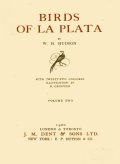

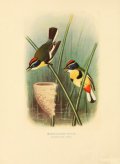 |
|
Birds of La PlataVolume TwoW. H. Hudson
Illustrations: Henrik Gronvold
J.M. Dent & Sons
1920
Originally published in two volumes.
From the opening lines: "The Trochilidae, or Humming-birds, a distinctly South American form, are one of the most numerous families of birds on the globe, numbering over 400 known species, and ranging over the entire continent down to Tierra del Fuego. How surprising then to find that of this multitude of species no more than about a dozen are found in the entire Argentine country 1 It only adds to the surprise when it is found that humming-birds of these few species are common enough throughout the country. Even on the almost treeless grassy pampas of Buenos Ayres which are unsuited to the habits of this feathered forest sprite, one species at all events is found every- where. Personally I was acquainted with only three species, and I recall that when living on the open pampas, every season when the white acacia at my home was in flower we had an invasion of Humming-birds. The plantation was divided by avenues of large acacia trees^ about a thousand in all, and as long as the blossoms lasted the little glittering birds were to be seen all over the place, in almost every tree, revelling in the fragrant sweetness; but no sooner were the flowers faded than they were gone, and thereafter two or three pairs only remained to breed and spend the summer months in the plantation. All these birds were of one species — the Glittering Humming-bird, but on going a few miles from home to the marsh and forest on the low shores of the Plata river I would find the other two species. I spent a summer, bird- watching, in a herdsman's hut in the marshy forest and used to go out at sunset to a small open space overgrown with viper's-bugloss in flower. There is no flower the Humming-bird likes so well, and he is most busy feeding just before dark. Here, standing among the flowers, I would watch the shining little birds coming and going, each bird spending a minute or two sucking honey, then vanishing back into the shadowy trees, and from fifty to a hundred of them would always be in sight all around me at a time. Here all three species were feeding together; but I was familiar with the habits of only one, the bird I describe here."
|
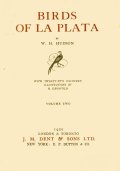
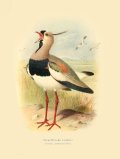
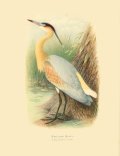 |
|
Territory In Bird Life
H. Eliot Howard
Illustrations: G. E. Lodge, H. Grönvold
John Murray
1920
Subsequently republished at least twice.
Preface: "When studying the Warblers some twenty years ago, I became aware of the fact that each male isolates itself at the commencement of the breeding season and exercises dominion over a restricted area of ground. Further investigation, pursued with a view to ascertaining the relation of this particular mode of behaviour to the system of reproduction, led to my studying various species, not only those of close affinity, but those widely remote in the tree of avian life. The present work is the outcome of those investigations. In it I have endeavoured to interpret the prospective value of the behaviour, and to trace out the relationships in the organic and inorganic world which have determined its survival. Much is mere speculation; much with fuller knowledge may be found to be wrong. But I venture to hope that a nucleus will remain upon which a more complete territorial system may one day be established. I have to thank Mr G. E. Lodge and Mr H. Grönvold for the trouble they have taken in executing my wishes; I also want to record my indebtedness to the late E. W. Hopewell ; and to Professor Lloyd Morgan, F.R.S., I am beholden more than I can tell." |

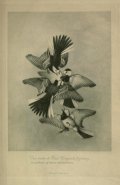 |
|
A Monograph Of The PheasantsVolume IWilliam Beebe
Colour plates: A. Thorburn, G.E. Lodge, H. Grönvold, C. R. Knight
Photographs: William Beebe
Published under the auspices of the New York Zoological Society by Witherby and Co
1918
Published in four volumes.
From the introduction: "The readers of such a monograph as this, are attracted either because of the pleasure they find in the beauty and grace of pheasants; from the interest of keeping them in captivity or on preserves; from the enthusiasm of a sportsman; or for reference in ornithological research. With this in mind, I have arranged the text so as to afford equal facility to all these varied interests. The natural history of the pheasants is the dominant theme; their wild life and the part they play in the scheme of nature in their Asiatic haunts. Hence I have striven to put this phase to the fore in the cases both of general and specific treatment. In the present volume I have written a brief synoptic account of pheasants as a whole, reserving the details of their care in captivity for a chapter in the final volume. In treating of the various species, a brief description of the adult birds precedes each account, the more intimate details of plumage, moult and variation, together with the synonomy being readily accessible at the end of each species monograph. In the preparation of any work of a monographic character, there comes to the writer, sooner or later, the feeling that his part in it is small indeed compared to the great company of others who have aided him. From the philosopher who passed away many decades ago but whose written word is still an inspiration, to the naked Dyak who proudly comes bearing a trapped bird to Tuan - a gift not for money, but as from one hunter to another - between these extremes there extends a long roll whose aid is given freely and for sheer love of the wilderness folk."
|
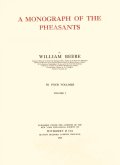
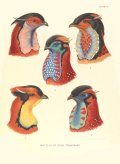
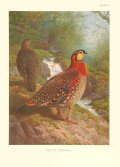
|
|
The Birds Of British Guiana: Based On The Collection Of Frederick Vavasour McconnellVolume ICharles Chubb
Preface: Mrs F.V. McConnell
10 colour plates (H. Grönvold) and numerous black and white illustrations
Bernard Quaritch
1916
From the preface: "My husband, Mr. F. V. McConnell, who spent some years in British Guiana, was deeply interested in ornithology, and made a fairly complete collection of the birds of the country. He also made two long excursions into the interior of the Colony, on both occasions visiting the far-famed Mountain Rorainia. For some time previous to his death, he, with the assistance of Mr. Charles Chubb, of the Zoological Department of the British Museum, had been engaged on a catalogue of his collection. Since his death in 1914, wishing, in memory of my husband, to have some record of his work, I decided, instead of simply completing the catalogue, to ask Mr. Chubb to describe all the known birds of British Guiana, based chiefly on this collection. I trust this book will prove useful to other workers in the same branch of natural history. The details of my husband's travels, with photographs of some of the places visited, which I have added, may perhaps give it a wider interest."
|


 |
|
Reports on the collections made by the British Ornithologists' Union Expedition and the Wollaston Expedition in Dutch New Guinea 1910-1913
Editor: W.R. Ogilvie-Grant
Illustrations: H. Grönvold and others
Francis Edwards
1916
A two volume work that collects together reports that summarise the findings of two expeditions to Dutch New Guinea in 1909-10 and 1912-13. Some of the reports had been published prior to 1916 in the Journal of the Royal Geographic Society, the Transactions of the Zoological Society, the Transactions of the Linnean society of London, the Ibis, and the Proceedings of the Zoological Society. The work includes 10 colour plates and a number of uncoloured plates. |
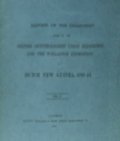
|
|
Reports of the Princeton University Expeditions to Patagonia, 1896-1899, Volume 2: Ornithology
Part IV: Anatidae - Tytodidae
Editor: William B. ScottWilliam Earl Dodge Scott associated with R. Bowdler Sharpe / Witmer Stone
Illustrations: H. Grönvold and others
Princeton, The University / E. Schweizepbart'sche Verlagshandlung
1915
|
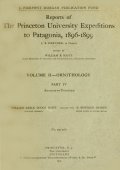

 |
|
British Diving Ducks
J.G. Milais
Plates: J.G. Millais, Archibald Thorburn, O. Murray Dixon, H. Gronvold
Longmans Green & Co
1913
Published in 2 volumes with many coloured and black and white plates.
Volume I: 141 pages with 20 colour plates and 10 b/w plates
Volume II: 164 pages with 17 colour plates and 25 b/w plates
|
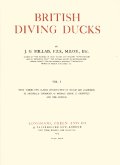
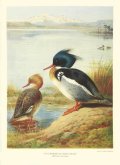
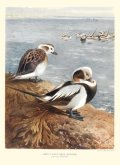
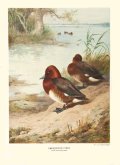
|
|
Indian Pigeons and DovesE.C. Stuart Baker
Illustrations: H. Grönvold and G. E. Lodge
Witherby & Co
1913
From the preface: "My reasons for writing a volume upon our Indian Pigeons and Dovea are several, and I trust will be deemed sufficient by my readers. In the first place, there has as yet been no book published which deals with these most beautiful birds from the point of view of the Sportsman and Field-Naturalist as well as from that of the Scientific or Museum-Naturalist, and as this is a gap in the records of our Indian Avifauna which badly needs filling, I may be forgiven for trying to bridge it. Skins - as skins - are, without doubt, full of interest, and especially so, perhaps, when the person studying them is more or less intimate with the life-histories of the birds themselves ; but Pigeons are well worthy of study in ways other than by dry skins. To the Field-Naturalist they are birds full of interest; to the Aviculturist they are birds more charming and worthy of culture than has hitherto been generally admitted, and to the Sportsman they offer an object well worthy of attention, for he must have a quick eye, a sure hand, and considerable perseverance and patience before he has mastered their habits and is able to find them and, when found, bring them to bag.
|
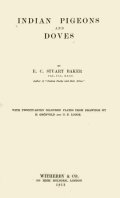
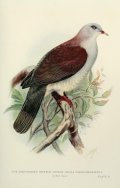 |
|
The Birds Of South America
Volume 1: A List Of Birds Of South America
Volume 2: Illustrations of Game Birds and Water Fowl Of South America
Lord Brabourne and Charles Chubb
Illustrations: Henrik Grönvold
R.H. Porter / John Wheldon / Taylor & Fracis
Vol. 1: 1912
Vol. 2: 1917
These two volumes are all that was published of a planned multi-volume work. The project was abandoned after the death of Lord Brabourne in 1915. Volume 1 is a complete list of birds of the continent. Volume 2 comprises the colour plates that had been prepared for subsequent volumes.
From the introduction to volume 1: "The only previous list dealing with the birds of South America as a whole is that published by Messrs. Sclater and Salvin in 1873 - 'Nomenclator, Avium Neotropicalum' - and although Central America, Mexico to Panama, and the Galapagos Islands were included in that list, the number of species was only 3565, while the present list recognises 4561 forms in South America alone. The names used in this List appear as binomials, but it must be clearly understood, however, that this system has been used only for convenience and simplicity. It does not mean that we accept all the forms included here as being oŁ specific value. Trinomials can only be determined by means of monographic revision, and these will be used throughout the body of the forthcoming work. The names here given are thus of unequal value, and only represent the forms which have been accepted as valid species and subspecies by previous authors. The method used in the preparation of this List has been to verify the original description or figure of each species, cite the locality, and give an outline of the distribution in South America. We have not thought it desirable to give the extra-limital range, but we intend to do so in the forthcoming volumes, where all the details will be fully worked out."
|

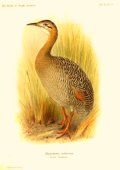
 |
|
Catalogue of the Collection of Birds' Eggs in the British Museum (Natural History)Volume V: Carinatae (Passeriformes completed)
W.R. Ogilvie-Grant
22 colour plates: H. Gronvold
Printed By Order Of The Trustees
Printed by Taylor & Francis
1912
Preface: "The present volume, which brings the Catalogue of Birds' Eggs to a conclusion, has been retarded in its preparation by more than one cause. The principal reason for the delay in its appearance has been the large amount of additional work which was thrown on Mr. W. R. Ogilvie-Grant, the author, by the death of Dr. R. Bowdler Sharpe at the end of 1909. The administration of the Bird Room, the incorporation of large collections and the rearrangement of the material already in hand, the planning of new Expeditions and the conduct of the voluminous correspondence involved by these fresh departures, added to the duty of dealing with the ceaseless stream of enquirers who visit or write to the Bird Room, might in themselves have been sufficient to have filled up all the available time. Mr. Ogilvie-Grant has done his work under considerable difficulties, and the delay has been unavoidable."
|
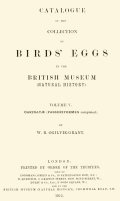
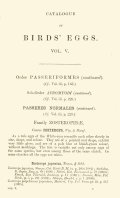
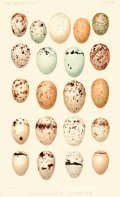 |
|
The Birds of AfricaComprising All The Species Which Occur In The Ethiopian RegionVolume V, Part IIPasseriformes (continued)G.E. Shelley
Completed and edited by W. L. Sclater
8 colour plates: Henrik Gronvold
Henry Southeran & Co
1912
Prefatory note: The present instalment completes the fifth volume of the late Captain Shelley's great undertaking. Soon after the appearance of the first part of the present volume in 1906, the author was struck down by a sudden illness - a stroke of paralysis - and although he lived on till November 29, 1910, he was unable to continue his labours. The completion of his work, however, was constantly in his thoughts, and shortly before his death I was asked by Mrs. Shelley if I would undertake this task. It was not, however, until afterwards, in the middle of last year, that the arrangements could be made for doing so. Mrs. Shelley then handed over to me all the MSS. and the proofs of four sheets which were already in type. The plan and arrangement of the present part is mainly that of the late Captain Shelley, and my task has been to supply descriptions of some of the species, many of which were very incomplete, to revise the whole in the light of the additional facts and discoveries of the last six years, and to pass the work through the press. I am indebted to my father, Mr. P. L. Sclater, for having read through the proofs for me, and to Mr. Ogilvie Grant for much help and many facilities afforded to me in the Bird Room at the British Museum. It is hoped that the work may be completed in four or five more volumes."
|
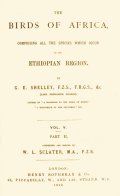
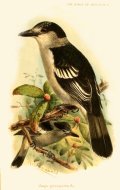
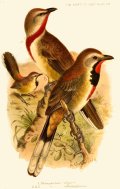 |
|
Pheasants In Covert And Aviary
Frank Townend Barton
Four colour plates from life by H. Grönvold and thirty seven other illustrations
John Long Limited
1912
From the preface: It will, I think, be admitted by all readers of this work, that very little excuse need be offered for its introduction to the public, or rather to those interested in matters appertaining to Pheasants, either for the Covert or for the Aviary, a title to which the present publication answers. It is somewhat surprising to note the small amount of literature that has appeared in volume form concerning Pheasants and their general management. As far as the writer is aware, there are only one or two manuals published relating to a description of the Phasianidae and their management, the most notable book being Elliot's valuable Monograph on the Phasianidae, a work that now approaches three figures to purchase it. Be this as it may, the Author is confident in believing that the task he has undertaken will find adequate reward by giving such information as may be useful to those engaged in preservation of Pheasants - in fact, to all sporting men interested in this the Prince of Birds.
|

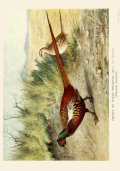
|
|
The Birds Of AustraliaGregory M. Mathews
Illustrations: J.G. Keulemans (Vol. 1 to 4), H. Grönvold, Roland Green, H. Goodchild, G.E. Lodge
Witherby
1910-1927
Originally issued in 75 instalments. These were collected in 12 volumes which were published by Witherby between 1910 and 1927. A 13th volume collected supplementary instalments.
|

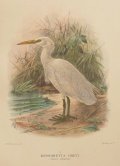 |
|
The British Bird Book: A Complete Work On The Birds, Nests And Eggs Of Great BritainEditor: F.B. Kirkman
Authors: J. L. Bonhote, William Farren, F. B. Kirkman, W. P. Pycraft, Edmund Selous, A. Landsborough Thomson, Emma L. Turner
Illustrations: Winifred Austen, G. E. Collins, G. E. Lodge, H. Grönvold, A. W. Seaby
Photographs: F. E. Daniel, W. Farren, Riley Fortune, C. J. King, Seton P. Gordon, Charles Reid, E. L. Turner, the Editor and other
T.C. & E.C. Jack
1910
Published in four volumes, each of which was divided into three sections. Includes 200 colour plates and many black and white photographs. From the preface: One result of the growing interest taken during recent years in the study of ornithology is a considerable addition to our knowledge of the habits of British Birds. As no important comprehensive British work on the subject has appeared since the well-known Histories of Yarrell (revised and partly rewritten by Newton and Saunders, 1871-85) and Seebohm (1883-85), this knowledge remains inaccessible to those of us who are not prepared to search through a large and scattered literature, periodical and other. The sources of information available, moreover, before the above Histories appeared, have yet to be exhausted. Superior to both of them, in its account of a number of our species, is the monumental German work of the Naumanns, father and son, a new edition of which, revised by several prominent European ornithologists under the editorship of Dr. Carl Hennicke, was issued in 1897-1905 under the title of the Naturgeschichte der Vogel Mitteleuropas. But this edition, while giving very complete treatment to the description and distribution of most of the species, still leaves unrecorded many of the observations on their habits that have been made in our own and other countries. There is, therefore, place for a work that will bring together from every source, foreign and native, all the available information of any importance concerning the habits of British Birds. To do this, and to do it in a form interesting alike to the student of animal life and the general reader, is the chief object of the present undertaking.
|

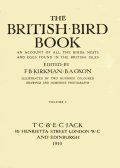
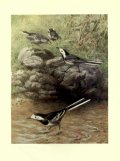 |
|
Reports of the Princeton University Expeditions to Patagonia, 1896-1899, Volume 2: Ornithology
Part II: Procellariidae - Charadriidae
Editor: William B. ScottWilliam Earl Dodge Scott associated with R. Bowdler Sharpe
Illustrations: H. Grönvold and others
Princeton, The University / E. Schweizepbart'sche Verlagshandlung
1910
|

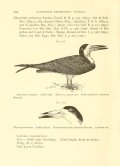
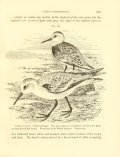 |
|
The Indian Ducks And Their AlliesE.C. Stuart Baker
Illustrations: H. Grönvold, G. E. Lodge, and J. G. Keulemans
Bombay Natural History Society
1908
Introduction: "In 1896 the Honorary Secretary of the Bombay Natural History Society induced me to write a series of articles on our Indian Chenomorphe, and consequently the articles which commenced in Volume xi. of the ' Journal ' of that Society made their appearance. Since the publication of Hume and Marshall's ' Game- Birds,' no attempt has been made to collect the various notes which have from time to time been printed in the 'Asian,' 'The Indian Field,' and other sporting papers, as well as in the B. N. H. S. Journal itself, and it has been a matter of great difficulty - often an impossibility - for either sportsman or ornithologist to know what has already been recorded and what has not. Hence many interesting facts and finds were never recorded at all, and these articles were originally written as much with a view to elicit more information as to place on record in a compact form what had already been recorded. That the raison d'etre was a good one was shown by the immediate receipt by the Editors of the 'Journal ' of numerous notes, giving both information that was new and correcting part that was old. The present book aims at being a corrected, up-to-date edition of these papers, and incorporates, as far as possible, the additional information received since they were brought out.
|
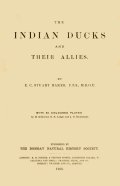
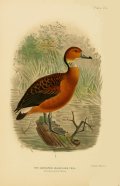 |
|
The British Warblers: A History With Problems Of Their Lives
H. Eliot Howard
Illustrations: Henrik Grönvold
R.H. Porter
1907-1914
Issued in 9 parts between 1907 and 1914.
Part 1: Sedge Warbler, Grasshopper Warbler
Part 2: Chiff-Chaff, Yellow-browed Warbler
Part 3: Blackcap, Pallas's Willow Warbler, Radde's Bush Warbler
Part 4: Whitethroat, Lesser Whitethroat, Greenish Willow Warbler, Siberian Chiff-Chaff
Part 5: Reed Warbler, Melodious Warbler
Part 6: Willow Warbler, Savi's Warbler, Rufous Warbler
Part 7: Marsh Warbler, Great Reed Warbler, Aquatic Warbler
Part 8: Garden Warbler, Barred Warbler, Subalpine Warbler, Wood Warbler
Part 9: Orphean Warbler, Dartford Warbler, Icterine Warbler, General Summary and Concluding Remarks, Table of measurements, Localities
|
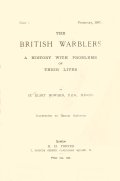
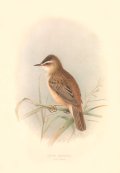
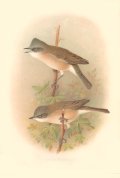 |
|
Birds Of Great Britain And Ireland: Order PasseresVolume IArthur G. Butler
Illustrations: H. Grönvold and F.W. Frohawk
Brumby & Clarke Limited
1907
Published in two volumes
From the introduction: This group of Birds has always been a favourite with me, as with most students of the feathered race. I have taken and preserved both nests and eggs of most of the British species, and have studied the habits of many of them in captivity, as well as in a wild state. The Order Passeres (following the classification adopted by Howard Saunders in his admirable Illustrated Manual) includes seventeen families, the members of which are mostly suitable for aviary or cage-life; of these the Turdida (Thrush-like birds), the Fringillida (Finches), and Alaudidce (Lark-like birds) find favour with the larger number of Aviculturists."
|
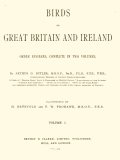
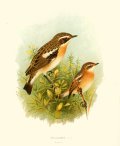
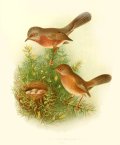 |
|
Birds Of Great Britain And Ireland: Order PasseresVolume IIArthur G. Butler
Illustrations: H. Grönvold and F.W. Frohawk
Brumby & Clarke Limited
1907
Published in two volumes
Opening lines: FAMILY ORIOLIDAE. This family consists of a tropical group of brightly coloured birds in which yellow and black, or scarlet and black, are the prevailing hues. Although in the general form of their heads they somewhat remind one of Starlings, they must not be confounded with the so-called "Orioles" of the New World, which belong to the family Icteridae or Hang-nests and Troupials, a group of birds linking the Finches and the Starlings, and feeding largely upon seeds and insects. The late Henry Seebohm was of opinion that the Orioles were nearly related to the Crows; he, therefore, placed the genus Oriolus in his Subfamily Corvinae, from which he said that they chiefly differed in their exposed nostrils, although he admitted that the tarsus might perhaps be slightly shorter, and the prevailing colours different; whilst the sexes also were dissimilar."
|
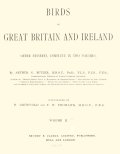
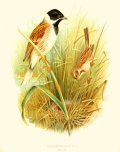
 |
|
Extinct BirdsWalter Rothschild
Illustrations: John Gerrard Keulemans, George Edward Lodge, Henrik Grönvold, Frederick William Frohawk, and Joseph Smit
Hutchinson & Co
1907
From the preface: "When I decided to read a paper before the Ornithological Congress of 1905 on Extinct and Vanishing Birds, I found it necessary to illustrate my paper by a number of drawings. These drawings roused special interest among those who listened to my lecture, and I was asked by many if I could not see my way to publish the lecture and drawings, in book form, as these plates were far too numerous for the proceedings of the Congress. After some hesitation I determined to do this, greatly owing to the persuasion of the late Dr. Paul Leverkuhn. The preparation of a book required considerably more research than the lecture, and therefore my readers will find, in the following pages, a totally different account to that in the lecture, as well as corrections and numerous additions. The lecture itself has been published in the " Proceedings of the IVth International Ornithological Congress." I wish to thank very heartily all those of my ornithological friends, who have kindly helped me with the loan of specimens or otherwise, and especially Dr. H. O. Forbes, Dr. Scharff, Professor Dr. K. Lampert, Dr. O. Finsch, Professor Dr. A. Koenig, Dr. Kerbert, Mr. Fleming, Dr. von Lorenz, and others."
|
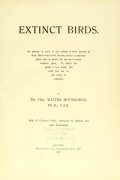
 |
|
The Birds Of South AfricaVolume IV: Game-Birds, Shore-Birds And Sea-BirdsW.L. SclaterCommenced by Arthur C. Stark
Black and white illustrations: H. Grönvold
R.H. Porter
1906
From the preface: The present volume concludes the account of the birds of South Africa. In it are described 251 species of the Game-, Shore- and Water-birds, making 814 species in all for South Africa. It had been my intention to add a supplement, giving accounts of the species described since the issue of the first volume, with other corrections and additions. The supple- ment, it w^as found, would contain so large a number of pages that I was forced to abandon it. The material collected for this purpose, however, has been published in the Annals of the South African Museum (vol. iii., part 8, 1905), and can be easily obtained by any one who wishes to consult it. As in the case of the third volume, I am alone responsible for the contents of this, although I have made some use of Dr. Stark's notebook. I have to thank my numerous South African correspondents for much information and help freely given ; among them I should like specially to mention Mr. A. D. Millar, Major Sparrow, Mr. G. A. K. Marshall, Dr. Stoehr, Mr. J. G. Brown of Port Elizabeth, Mr. Haagner, Dr. Howard and Mr. Gilfillan. As before, the illustrations, with a few exceptions, have been specially prepared for this volume by Mr. Gronvold, to whom I am greatly indebted for the pains and trouble he has taken to carry out my wishes.
|
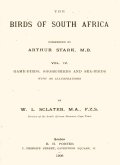
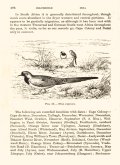
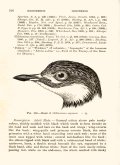 |
|
The Birds of AfricaComprising All The Species Which Occur In The Ethiopian RegionVolume V, Part IPasseriformes (continued)G.E. Shelley
7 colour plates: Henrik Gronvold
R.H. Porter
1906
No preface or introduction. Example text from first species described (Oriolus galbula): The European Golden Oriole breeds during its migration in Europe and Western Asia, and has been met with as far north as 60° N. lat. It ranges over the whole of Eastern and Southern Africa, and North-western Africa to as far south as Senegambia. The greater portion of the specimens migrate from Africa in April, and return to that continent again in September, but some apparently remain in Tropical Africa throughout the year, for Dr. Hinde procured an example at Nairobi, on June 1, 1899. It has not been recorded from Western Africa, between Senegambia and Damaraland, so it apparently migrates from the latter country and Cape Colony, through the eastern side of the continent, and according to Hartlaub (Vog. Madag., 1877, p. 159), has been met with on the island of Madagascar in October. When I was in Egypt these Orioles were first seen on April 20, and soon became plentiful in parties of five or six, all hurrying northward on their migration. They are shy birds, and naturally keep to the thickest foliaged trees they meet with, so consequently are not easy to observe, but may be attracted into view by imitating their loud flute-like note, which has been compared to the words, "Who are you," which is an appropriate remark for these birds to make, as they are very wary and careful not to show themselves in dangerous company. Mr. Dresser gives good figures of the adult male and female (Birds of Europe, iii., p. 3G5, pi. 144) and writes: "It devours all sorts of insects that inhabit the woodlands, but is especially fond of the large green caterpillars which are found on the leaves of the trees. It also feeds largely on berries and fruit when in season, but is not more destructive in a garden than many other birds, and amply repays any mischief it may do by the number of noxious insects it kills. It is most partial to cherries, of all garden-fruit, but will also feed on currants, and especially on mulberries."
|

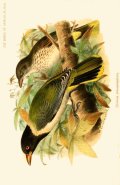
 |
|
The Birds of AfricaComprising All The Species Which Occur In The Ethiopian RegionVolume IV, Part IIPasseriformes (continued)G.E. Shelley
7 colour plates: Henrik Gronvold
R.H. Porter
1905
No preface or introduction. Example text from first species described (Spermospiza haematina): Verreaux received the species from Casamanse, and Brogden met with it at Sierra Leone; here Mr. Kemp procured speci mens from March to October at Rotifunk, Jagbamah and Bo, and writes: "It frequents the farms and marshy ground like Pyrpnestes coccineus, is very wary and as difficult to see as that bird, and like that species apparently breeds here in August and September." Dr. Biittikofer found its nest in Liberia and remarks that it does not breed in colonies. The nest was placed in the fork of a bush, some four feet from the ground, in the undergrowth of the forest, and was spherical in form, about five inches in diameter, with the entrance near the top, and was constructed of soft grass without any lining, and contained two white eggs, measuring 0.76 x 0.52. He remarks that in one of his male specimens the upper tail-coverts were broadly edged with red; probably this was the remains of the immature plumage, for it appears to me that both sexes, when young, have the same amount of dull red on the upper tail- coverts ; but unfortunately the sex has not been recorded of any of the immature birds I have examined. The species is fairly distributed throughout Liberia and the Gold Coast, and is represented in the British Museum from Sierra Leone, Ashantee, Wassaw, Denkera Forest, Cape Coast, Accra and Abeokuta, but as it lives in pairs in the thick bush and forest country, is only occasionally seen. On the Gold Coast, in March, Buckley and I found them frequenting the dense bush, appearing at times singly or in pairs on the narrow footpaths.
|

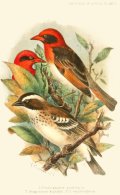
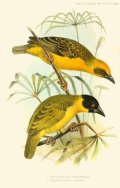 |
|
The Birds of AfricaComprising All The Species Which Occur In The Ethiopian RegionVolume IV, Part IPasseriformes (continued)G.E. Shelley
7 colour plates: Henrik Gronvold
R.H. Porter
1905
No preface or introduction. Example text from first species described (Linurgus concolor): The Great Brown Short-tailed Finch is confined to the Island of St. Thomas. The species was discovered by Mr. F. Newton, who informs us that it is known to the natives of the island as the "Enjolo." On the east coast he procured two specimens at the Rio Quija, which runs through the large forest at Angolares, and he observed it on the west coast at St. Miguel. I overlooked the affinities of this bird when I published my third volume of the "Birds of Africa," presuming that it had been rightly assigned to the genus Amblyospiza, where it remained until Count Salvadori pointed out that it is a true Finch, and proposed to make it the type of a new genus Neospiza (Ace. R. Sc. Torino, 1903, p. 26). This species appears to me not to be generically distinct from Linurgus rufibrunneus, Gray, and Phseospiza thomensis, Bocage, both of which I have referred to the genus Linurgus, Reichenbach.
|
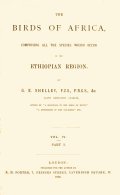

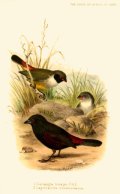 |
|
Catalogue of the Collection of Birds' Eggs in the British Museum (Natural History)Volume IV: Carinatae (Passeriformes continued)
Eugene W. Oates
Assisted by Capt. Savile G. Reid
14 colour plates: H. Gronvold
Printed By Order Of The Trustees
Printed by Taylor & Francis
1905
Preface: "I regret that, owing to the ill-health of Mr. Oates, it has been found necessary to entrust the completion of the Catalogue of Birds' Eggs to other hands. The manuscript prepared by him was in a forward state, and the Trustees have been fortunate in securing the co-operation of a well-known Ornithologist, Capt. Savile Reid, who has revised the manuscript and the proofs. Capt. Reid has also written the Index to the present volume, and has incorporated in the text references to the specimens recently received by the Museum."
|
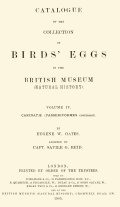
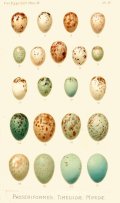
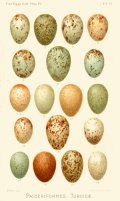 |
|
The Birds of Tunisia, Vol. II
Being A History Of The Birds Found In The Regency Of Tunis Tunisia
J.I.S. Whitaker
2 colour plates: H. Grönvold
R.H. Porter
1905
|
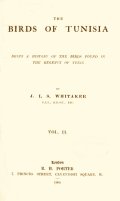
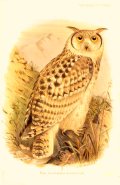
 |
|
The Birds of Tunisia, Vol. I
Being A History Of The Birds Found In The Regency Of Tunis Tunisia
J.I.S. Whitaker
13 colour plates: H. Grönvold
R.H. Porter
1905
From the introduction: "The object of the present work is chiefly to supply a want, which I myself, and probably others, have felt, in the absence of any English publication which treats systematically of the birds to be found in the Regency of Tunis. It is true that during the past few years our brother-ornithologists in Germany have not been idle in this part of North-west Africa, but, on the contrary, have contributed valuable information to our knowledge of the Tunisian Avifauna, and to Prof. A. Koenig of Bonn and the late Carlo Freiherr von Erlanger of Ingelheim, we are indebted for highly interesting accounts of their researches in the Regency, which have been published in the Journal fur Ornithologie"
|
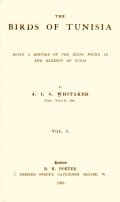
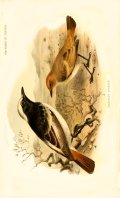
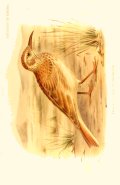 |
|
The Mammals of Great Britain and Ireland
J.G. Milais
Plates: J.G. Millais, Archibald Thorburn, G.E. Lodge, H. Gronvold, E.S. Hodgson, H.W.E. Davis
Longmans Green & Co
1904-1906
Published in 3 volumes with many coloured and black and white plates.
Volume I (1904): 365 pages, plates by J.G. Millais, Archibald Thorburn, G.E. Lodge
Volume II (1905): 299 pages, plates by J.G. Millais, Archibald Thorburn, G.E. Lodge, H. Gronvold
Volume III (1906): 384 pages, plates by J.G. Millais, Archibald Thorburn, H. Gronvold, E.S. Hodgson, H.W.E. Davis
|
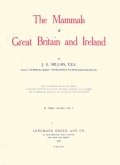 |
|
Catalogue of the Collection of Birds' Eggs in the British Museum (Natural History)Volume III: Carinatae (Psittaciformes - Passeriformes)
Eugene W. Oates
Assisted by Capt. Savile G. Reid
10 colour plates: H. Gronvold
Printed By Order Of The Trustees
Printed by Taylor & Francis
1903
Preface: "I regret that, owing to the ill-health of Mr. Oates, it has been found necessary to entrust the completion of the Catalogue of Birds' Eggs to other hands. The manuscript prepared by him was in a forward state, and the Trustees have been fortunate in securing the co-operation of a well-known Ornithologist, Capt. Savile Reid, who has revised the manuscript and the proofs. Capt. Reid has also written the Index to the present volume, and has incorporated in the text references to the specimens recently received by the Museum."
|
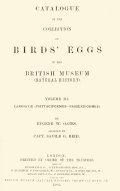
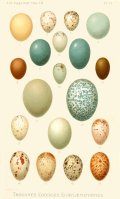
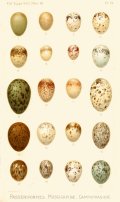 |
|
The Birds Of South AfricaVolume III: Picarians, Parrots, Owls And HawksW.L. SclaterCommenced by Arthur C. Stark
Black and white illustrations: H. Grönvold
R.H. Porter
1903
From the preface: The present volume contains an account of 183 species of birds included in the orders Picariae, Psittaci, Striges and Accipitres. For the contents of this volume I am alone responsible, although I have been able to make use of the late Dr. Stark's note books and journals. I must again thank my many friends and correspondents for help freely and generously rendered, and especially am I indebted to Mr. A. D. Millar of Durban, to Mr. Ivy of Grahamstown, and to Mr. John Wood of East London. As in previous volumes the illustrations with a few exceptions have all been drawn specially for this work by the skilful hand of Mr. Gronvold.
|
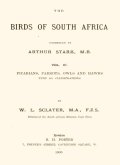
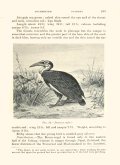
 |
|
The Natural History Of Sokotra And Abdel-KuriBeing The Report Upon The Results Of The Conjoint Expedition To These Islands In 1898-9, By Mr. W.R. Ogilvie-Grant, Of The British Museum, And Dr. H.O. Forbes, Of The Liverpool Museums, Together With Information From Other Available Sources
Editor: Dr. H.O. Forbes
Plates: P. Smit, H. Grönvold, F.O. Pickard-Cambridge, J. Green, H. Knight, Mrs I.B. Balfour, M. Horman-Fisher, T. Latham, and other
Special Bulletin Of The Liverpool Museums
Henry Young & Sons
1903
Approximately 580 pages with 28 plates and numerous line drawing in text. Contributions from 22 authors including a 54 page section on birds by W.R. Ogilvie-Grant and Dr. H.O. Forbes. The section on birds includes five colour plates by Henrik Gronvold.
From the preface: This volume contains the results of a conjoint Expedition undertaken in the winter of 1898-9 by representatives of the British and Liverpool Museums, for (chiefly) the Zoological exploration of Sokotra. By incorporating the results of previous or (where available) contemporaneous explorations, the work forms practically a Monograph of the islands visited.
Opening lines of the bird section: The results of the ornithological work done by us in Sokotra and Abd-el-Kuri may he summed up as follows: - The number of birds collected by the Expedition was 437. Of these 41 specimens were obtained in the latter island during our two short visits, and 396 in the former. The species represented in the collection number in all 50, 10 from Abd-el-Kuri and 40 from Sokotra. Previous investigators of the larger island have recorded 20 species which were not secured by us, and none of which, save three, did we see; but, on the other hand, we discovered eight species new to science.
|
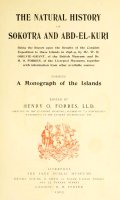
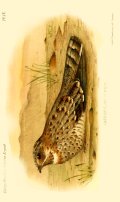
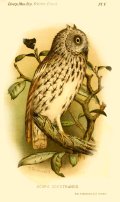 |
|
Parakeets. A Handbook to the Imported Species
David Seth-Smith
Plates: H. Goodchild, H. Grönvold
R.H. Porter
1903
280 pages with 20 colour plates and line drawing in the text.
|
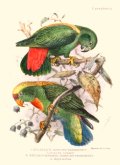 |
|
The Birds of AfricaComprising All The Species Which Occur In The Ethiopian RegionVolume IIIPasseriformes (continued)G.E. Shelley
14 colour plates: Henrik Gronvold
R.H. Porter
1902
No preface or introduction. Example text from first species described (Macronyx capensis): The Cape Long-claw ranges from Cape Colony into Zululand and Mashona. I met with the species near both Cape Town and Durban, singly or in pairs. They appear never to assemble in flocks, but to be very generally distributed over suitable country, such as the open veldt which is here and there interspersed with bushes and ant-hills, on the tops of which they immediately perch when disturbed. No doubt on account of this habit Levaillant called the species "L'Alouette Sentinelle," a more euphonious name than "Cut-throat Lark" or "Kalksentje;" by which they are generally known to the colonists. Like the other members of the genus Macronyx, it is partial to certain localities, for Layard writes: "Mr. W. Atmore declares that it is never found on Karroo soil, and we do not remember noticing it near Beaufort; certainly it is not recorded in Victorin's collections from the Karroo, though he appears to have met with it plentifully in the Knysna district." The species is common in Southern Cape Colony, Natal, Zululand and the Transvaal; but according to Dr. Bradshaw it is not found along the northern border of Cape Colony, and it has never been recorded from so far north as the Zambesi River.
|
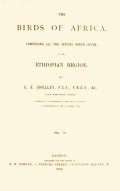
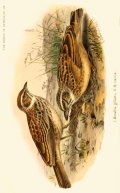
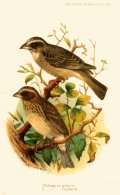 |
|
The Birds Of South AfricaVolume IIArthur C. Stark
Black and white illustrations: H. Grönvold, and others
R.H. Porter
1902
The manuscript of this volume was edited for publication by Mr W.L. Sclater.
The volume covers the remainder of the Passerine families not covered in Volume I. This comprises the Laniidae, Crateropodidae, Turdidae, Muscicapidae, Dicruridae, Campophagidae, Hirundinidae, and Pittidae.
|
 |
|
Catalogue of the Collection of Birds' Eggs in the British Museum (Natural History)Volume II: Carinatae (Charadriiformes - Stringiformes)
Eugene W. Oates
15 colour plates: H. Gronvold
Printed By Order Of The Trustees
Printed by Taylor & Francis
1902
Preface: "The number of specimens of eggs enumerated by Mr. Gates in this second volume of his Catalogue is just 15,000. The Crowley Bequest proves from its registration, which has not yet been completed, to have added very largely to the series of eggs in the National Collection, and it has supplied a large number of desiderata. It is especially rich in eggs of Australian birds, of which the Museum had not a good series, and a glance at the following pages will show how important have been the accessions from Mr. Crowley's bequest. As before, the editing of this volume has been undertaken by Dr. Bowdler Sharpe, the Assistant Keeper in charge of the Sub-Department of Vertebrata."
|
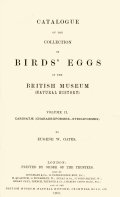
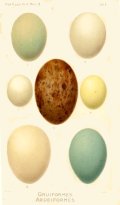
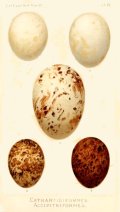 |
|
Catalogue of the Collection of Birds' Eggs in the British Museum (Natural History)Volume I: Ratitae. Carinatae (Tinamiformes - Lariformes)
Eugene W. Oates
18 colour plates: H. Gronvold
Printed By Order Of The Trustees
Printed by Taylor & Francis
1901
From the preface: "The present volume has been written by Mr. Eugene W. Gates, who is well known to Ornithologists as the Editor of the second edition of Mr. Allan Hume's Nests and Eggs of Indian Birds, and as the author of the earlier volumes of the Aves in the Fauna of British India. That he has performed his task conscientiously will be easily perceptible from a perusal of the following pages. The Collection of Birds' Eggs in the British Museum now exceeds a total of 50,000 specimens. It was arranged and labelled some few years ago by Miss Emily Mary Sharpe, under the direction of the late Mr. Henry Seebohm and her father, Dr. Bowdler Sharpe. On that occasion Mr. Seebohm presented to the Trustees the whole of his collection of eggs of Palaearctic Birds, and an opportunity was thus offered of re-arranging the entire series in the Museum. At the same time the valuable donations of Mr, A. 0. Hume, Messrs. Salvin and Godman, Mr. Berkeley James, and other friends of the Museum, were incorporated. The original collection of Birds' eggs in the British Museum was rendered of little worth by the exposure of many precious specimens to the light of the public galleries, and by the mounting of the study collection on wooden tablets. Most of these specimens have perished, or have become so bleached as to bo worthless for purposes of study."
|


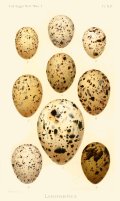 |
|
The Story Of Fish LifeW.P. Pycraft
Black and white illustrations: H. Grönvold and others
George Newnes
1901
From the introduction: The Story of Fish Life began ages and ages ago. Of this we are assured, not by any written record, but through the labours of those who spend their lives in exploring the dried basins of ancient lakes and seas, searching for the dead which may incidentally have been preserved therein. The accumulated results of these explorations have provided us with a rich material for study in the shape of the hard parts, at least, of fishes of many kinds, the like of which, in many cases, we shall never see again. But some of these may be traced through a long series of geological forma- tions, up to their living descendants; and serve to fill gaps otherwise incomprehensible. They enable us to weave out of the whole of the collected evidence a story, as plainly as though we had transcribed it from the more familiar print. But our story is even now by no means a connected story: there are many gaps which we can never hope to fill. For instance, the earliest of the known fishes was most certainly preceded by Still more primitive forms, whose structure did not permit of preservation, lacking hard parts such as bones or scales. The remains of certain other early types leave us yet in doubt on very important points, such as whether the mouth had jaws, what was the position of the eyes, and so on. Answers to many of these questions may, how- ever, yet come to hand, for the examination of rock systems of the world is by no means exhausted yet.
|
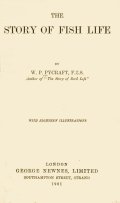
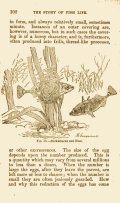 |
|
The Birds Of South AfricaVolume IArthur C. Stark
Black and white illustrations: H. Grönvold, J. Smit and others
R.H. Porter
1900
Preface: The present volume is the first of a series in which it is proposed to give an account of the Fauna of Africa south of the Zambesi and Cunene Rivers. It relates to the Passerine Birds, and contains descriptions of twelve out of the twenty South African families, and their constituent species. This portion of the 'Fauna' has been undertaken by Dr. A. C. Stark, who, besides being well acquainted with the literature of the subject, has spent a considerable time in various parts of the country to which it relates, and has had excellent opportunities of observing the birds in their native haunts.
|
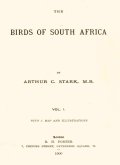
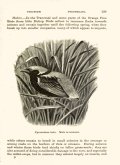
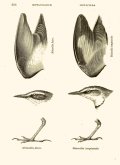 |
|
The Birds of AfricaComprising All The Species Which Occur In The Ethiopian RegionVolume IIPasseriformesG.E. Shelley
14 colour plates: Henrik Gronvold
R.H. Porter
1900
From the preface: When I published the first volume of The Birds of Africa I had sketched out the classification down to the Keys of the Species, and intended to bring this out as the second volume; but the number of known Ethiopian forms increases so rapidly that I recognised how imperfect these keys would be by the time I came to write the history of the species, so decided to work out each family in a monographic form. The Classification is compiled mostly from Seebohm's Classification of Birds (1890), and that proposed by Dr. R. B. Sharpe at the Ornithological Congress, Buda-Pest, 1891, and I have followed these authors in the use of the termination 'formes' for the seventeen large divisions which I call Orders. I begin with the Passeriformes and follow on with the Piciformes. The two families of these separate orders which appear to me to be most nearly allied are the Swallows and the Swifts, so as I end the Passeriformes with the Hirundinidas it entails beginning the classification with the Oligomyodse. The Oligomyodse lead most naturally into the Oscinen through the Madagascar genera Philepitta and Neodrepanis; therefore I commence the Oscines with the Nectariniidas. With regard to the synonymy of the species: I begin with what I consider to be the most correct name; quote the Catalogue of the Birds of the British Museum, where full synonymy is given in detail, and add only such references which have not appeared in that great work.
|

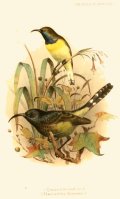
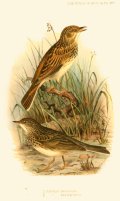 |
|
Bird-LifeW.P. Pycraft
3 black and white plates: H. Grönvold
Hodder & Stoughton
1899
From the preface: The object aimed at has been to present the main features of bird-life in a general way. Hence it is hoped this volume may prove of interest to bird-lovers the world over, not be- cause it contains information about the birds of any particular neighbourhood or country; but rather, because it serves as a guide to what should be looked for, and recorded, of the life- history of birds wherever they may be met with. Even dwellers in the sordid city have some material upon which they may exercise their powers of observation. Since there are no less than 13,000 known species of birds, it would have been courting failure, and wearisome in the extreme, to deal with individuals in detail! The present work then is a skeleton picture, which each can fill up as he may for himself.
|
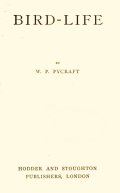
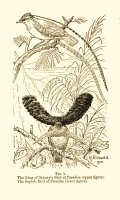 |
|
Beyond Petsora EastwardTwo Summer Voyages To Novaya Zemlya And The Islands Of Barent SeaHenry J. Pearson
With Appendices On The Botany And Geology by Colonel H.W. Feilden
1 colour plate: H. Grönvold
Maps and numerous black and white photographs
R.H. Porter
1899
From the preface: When discussing our plans for 1895, Novaya Zemlya struck us as a country containing much of interest in bird-life. Papers on the ornithology of these islands had already been published by Dr. K E. von Baer in 1837; by Mr. George Gillett (Ibis, 1870); by Dr. Th. von Heuglin (Ibis, 1872); by Von Pelzeln on Count Wilczek's expedition in 1872; and by Dr. Hjalmar Theel on the results of the Swedish expedition in 1875. The accounts also by Baron Nordenskiold, Admiral Markham, and others mentioned that Bewick's Swans and many rare birds nested there, the sight of which would well repay a voyage. There were, besides, questions unresolved by previous explorers which we felt a strong desire to investigate; and Novaya Zemlya was soon decided upon.
|
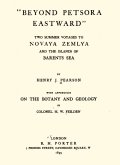

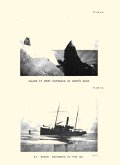 |
|